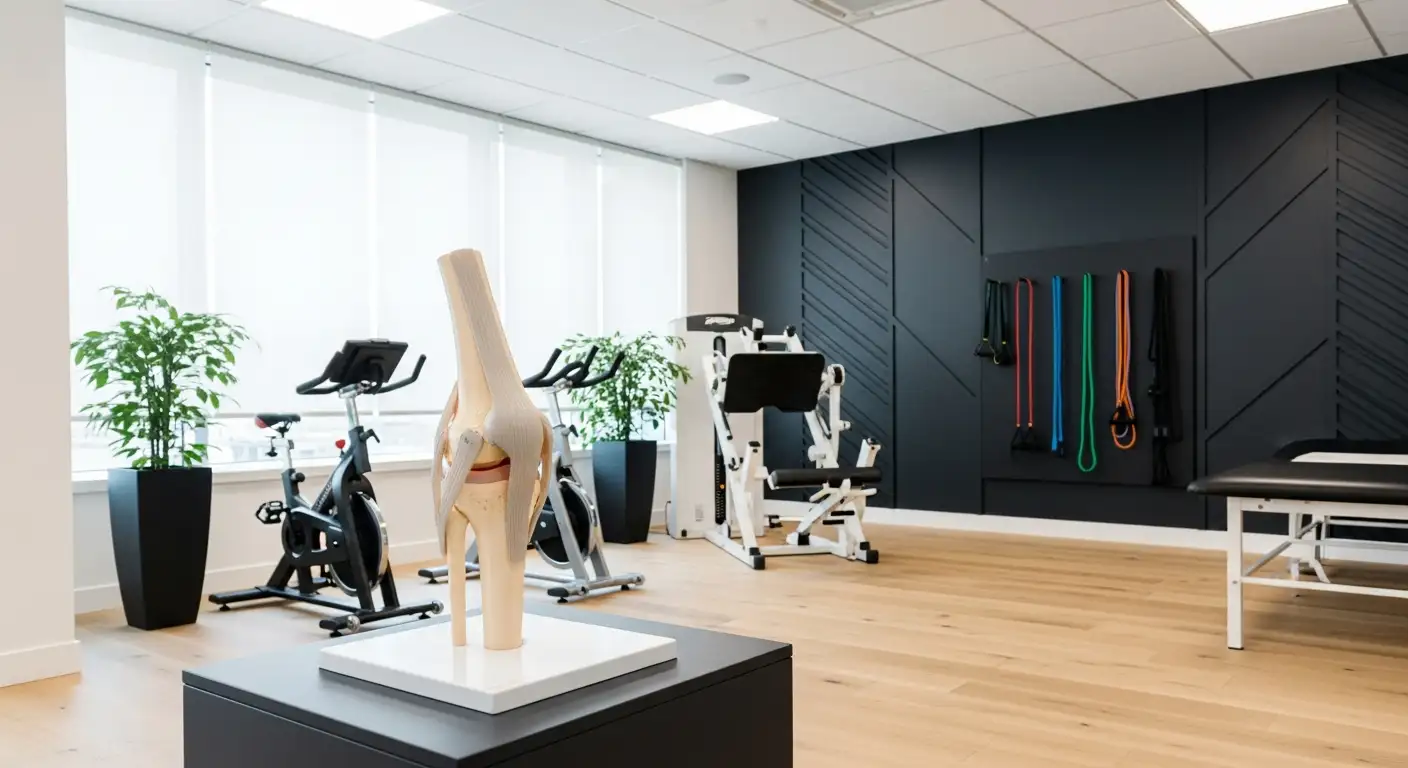Driving After Knee Surgery: What You Need to Know
After undergoing knee surgery, it's important to consider the necessary precautions and factors before resuming driving. The recovery process and individual circumstances play a significant role in determining when it is safe to get back behind the wheel.

Resuming Driving After Knee Surgery
The typical timeframe for resuming driving after knee surgery varies based on the specific procedure and the side of the surgery. Patients generally resume driving about 2 to 6 weeks following knee surgery, with the right side usually allowing for a quicker return compared to the left side. However, it's crucial to note that individual recovery rates may differ, and it is important to consult with the surgeon to determine the appropriate time for resuming driving.
Factors Influencing the Return to Driving
Several factors can influence the timeline for resuming driving after knee surgery. These factors include:
By considering these factors and consulting with healthcare providers, individuals can make informed decisions about when it is safe and appropriate to resume driving after knee surgery. It's essential to prioritize safety and ensure that physical ability and comfort levels are sufficient to operate a vehicle effectively, especially in emergency situations that may require sudden braking or turning [2].
Timing of Driving After Knee Surgery
After undergoing knee surgery, it is important to consider the appropriate timing for resuming driving. The timeframe for returning to driving can vary depending on the specific type of knee surgery and individual recovery progress.
Typical Timeframe for Driving
Patients generally resume driving about 2 to 6 weeks following knee surgery, taking into account the specific procedure and the side of the surgery. It is worth noting that the right side typically allows for a quicker return to driving compared to the left side.
For knee replacement surgery, patients are usually ready to drive 4-6 weeks post-surgery, provided they are not taking opioids, can comfortably operate the pedals, have good reflexes, and are no longer reliant on crutches or a cane. It is important to consult with the surgeon to determine the specific timeframe for resuming driving after knee replacement surgery, typically falling within the 4-6 week mark for most patients.
The average time to wait before driving after knee replacement surgery is between 6 and 8 weeks. About 80% of patients are able to resume driving after a 6-week wait, with some individuals even reporting an improvement in their driving skills after the surgery.
Individual Recovery and Driving Timeline
While there are typical timeframes, it is important to note that individual recovery and healing processes can vary. Surgeons may provide specific guidance based on the patient's progress. In general, patients can expect to resume driving between 4 to 6 weeks after total knee replacement surgery, taking into account their ability to bend the knee enough to comfortably enter and exit the vehicle, as well as properly control the vehicle while driving.
It is essential to prioritize safety and follow the recommendations of the healthcare provider regarding the timing of resuming driving after knee surgery. Each patient's recovery journey is unique, and it is crucial to allow sufficient time for the knee to heal and regain strength before attempting to drive again.
Considerations for Safe Driving
After knee surgery, it is important to consider certain factors to ensure safe driving. These include assessing physical ability and comfort as well as understanding the effects of medication on driving.
Physical Ability and Comfort
Before resuming driving after knee surgery, it is crucial to assess your physical ability and comfort level. Patients generally resume driving about 2 to 6 weeks following knee surgery, depending on the specific procedure and the side of the surgery. Patients who have undergone knee replacement surgery can typically drive again 4-6 weeks post-surgery if they are not taking opioids, can comfortably operate the pedals, have good reflexes, and are no longer relying on crutches or a cane [3].
Driving too soon after knee surgery can impact reaction time and potentially lead to accidents or injuries. Waiting until fully recovered allows for the resolution of pain, stiffness, and the gradual return of strength and range of motion in the knee. It is important to be able to confidently maneuver the vehicle, including performing emergency maneuvers that may require sudden braking or turning. Therefore, it is crucial to consult with your healthcare provider before resuming driving to ensure that you are physically capable of safely operating a vehicle [2].
Medication and Driving
Another consideration for safe driving after knee surgery is the potential effects of medication on driving. Some medications, such as opioids, can cause drowsiness, dizziness, and impair cognitive function, which can impact driving ability. It is important to understand the potential side effects of any medications you are taking and discuss these with your healthcare provider before getting behind the wheel.
Always follow the prescribed dosage and timing of your medications, and be aware of how they may affect your alertness and reaction time. If you are experiencing side effects that may impair your ability to drive safely, it is advisable to refrain from driving until the effects have subsided.
By considering physical ability and comfort, as well as understanding the effects of medication on driving, individuals can make informed decisions about when it is safe to resume driving after knee surgery. It is essential to prioritize safety and consult with healthcare professionals to ensure a smooth transition back to driving.
Preparing to Drive After Knee Surgery
Before getting behind the wheel again after knee surgery, it's important to take some necessary steps to ensure a safe and comfortable driving experience. This section covers two important aspects of preparing to drive after knee surgery: consulting with a healthcare provider and practicing driving skills.
Consulting with Healthcare Provider
Prior to resuming driving after knee surgery, it is crucial to consult with a healthcare provider, such as a physician or surgeon. The healthcare provider will evaluate the individual's recovery progress and assess their physical capability to safely operate a vehicle, especially in emergency situations that may require sudden braking or turning.
Consulting with a healthcare provider serves as an opportunity for patients to discuss any concerns or limitations they may have regarding driving. The healthcare provider can provide personalized advice and guidance based on the individual's specific condition, surgical procedure, and recovery progress. They can also address any potential risks or limitations that may affect the ability to drive safely.
Practicing Driving Skills
In some cases, it may be recommended for patients to practice driving in a safe environment, such as an empty parking lot, before returning to regular road driving post-knee surgery. This allows individuals to assess their comfort level, range of motion, and overall driving capabilities. Practicing driving skills in a controlled setting can help build confidence and identify any limitations or discomfort that may arise while operating a vehicle [2].
During the practice sessions, individuals should pay attention to their ability to comfortably reach the pedals, operate the steering wheel, and perform necessary movements without pain or limitations. It is important to remember that everyone's recovery timeline is different, and it may take some time to regain full strength and mobility after knee surgery. Therefore, practicing driving skills allows individuals to gradually reacquaint themselves with driving and ensure they can do so safely.
By consulting with a healthcare provider and practicing driving skills, individuals can ensure that they are physically capable and confident to resume driving after knee surgery. These steps help prioritize safety and provide peace of mind during the transition back to driving. It is essential to follow the guidance of healthcare professionals and be mindful of any limitations or discomfort experienced while driving to ensure a smooth and safe recovery process.
Recovery and Rehabilitation After Knee Surgery
After undergoing knee surgery, the recovery and rehabilitation process is crucial for regaining strength, range of motion, and overall function in the knee joint. This section focuses on two important aspects of recovery: rebuilding strength and range of motion, and adjusting to driving with a new knee joint.
Rebuilding Strength and Range of Motion
Following knee surgery, it is common for patients to experience a temporary loss of strength and limited range of motion. Physical therapy plays a vital role in the recovery process, helping individuals rebuild strength and improve flexibility in the knee joint. The American Society of Anesthesiologists emphasizes the importance of postoperative pain relief to enable patients to be active and effectively participate in rehabilitation [6].
Physical therapists often prescribe exercises and activities tailored to the specific needs of each patient. These exercises typically focus on strengthening the muscles surrounding the knee, improving balance, and increasing the range of motion. Regular and consistent participation in physical therapy sessions, both in a clinical setting and through at-home exercises, can promote a successful recovery.
Adjusting to Driving with a New Knee Joint
When it comes to driving after knee surgery, it is essential to prioritize safety and ensure that the knee joint has sufficiently healed and regained strength. The timeline for returning to driving can vary depending on factors such as the type of knee surgery, the knee affected, overall health, and individual recovery rate [3].
Patients are generally advised not to drive for at least 4-6 weeks after knee surgery to allow for the resolution of pain, stiffness, and the gradual return of strength and range of motion in the knee [2]. However, it is crucial to consult with the healthcare provider or surgeon to determine the appropriate timing for resuming driving, as individual circumstances may vary [3].
Before getting behind the wheel post-knee surgery, it is important to ensure that you are physically capable of safely operating a vehicle. This includes having full weight-bearing without assistive devices, being off pain medication, having unrestricted range of motion in the knee, and being able to operate the vehicle safely, especially in emergency situations that may require sudden braking or turning [2].
For some patients, practicing driving in a safe environment, such as an empty parking lot, may be recommended before returning to regular driving. This allows individuals to assess their comfort level, ensure they can operate the vehicle without discomfort or limitations, and regain confidence in their driving abilities post-surgery [2].
As always, it is essential to follow the guidance provided by the healthcare provider or surgeon regarding the appropriate timing and precautions for resuming driving after knee surgery. Patience and prioritizing safety during the recovery process will help ensure a successful transition back to driving.
Guidelines and Recommendations
When it comes to driving after knee surgery, there are specific guidelines and recommendations to ensure a safe and smooth transition back behind the wheel. Two key sources of guidance for driving after knee surgery are the NHS (National Health Service) and DVLA (Driver and Vehicle Licensing Agency).
NHS Guidelines for Driving After Knee Replacement Surgery
According to the NHS, individuals can resume driving after knee replacement surgery when they can bend their knee enough to get in and out of a car and control the car properly. It is crucial to feel in control and comfortable in the car at all times, including the ability to perform abrupt movements like emergency stops effortlessly.
The timeframe for returning to driving after knee replacement surgery may vary for each individual. It is recommended to consult with a healthcare provider to assess one's physical capability and ensure that it is safe to operate a vehicle, especially in emergency situations that may require sudden braking or turning [2].
DVLA Notification and Guidelines
In addition to adhering to the NHS guidelines, it is essential to inform the DVLA about the surgery. If an individual is still unable to drive three months after the knee surgery, they should notify the DVLA according to their guidelines.
By notifying the DVLA, individuals can ensure that they are complying with legal requirements and providing the necessary information regarding their ability to drive safely after knee surgery.
It's important to note that the specific timeframe for resuming driving after knee surgery may vary depending on the type of surgery, individual recovery, and the advice of the healthcare provider. Typically, patients are advised not to drive for at least 4-6 weeks after knee surgery to allow for pain and stiffness to subside, as well as for the gradual return of strength and range of motion in the knee. However, the average time to wait before driving after knee replacement surgery is between 6 and 8 weeks, with 80% of patients returning to driving after a 6-week wait with no negative impact.
Following the guidelines and recommendations set forth by the NHS and DVLA, individuals can make informed decisions regarding when it is safe to resume driving after knee surgery, ensuring their own well-being and the safety of others on the road.
Timing of Driving After Knee Surgery
After undergoing knee surgery, one of the common concerns people have is when they can safely resume driving. The timing for returning to driving can vary depending on the specific procedure and individual recovery. Let's explore the typical timeframe for driving after knee surgery and the factors that may influence this timeline.
Typical Timeframe for Driving
Patients generally resume driving about 2 to 6 weeks following knee surgery, as per JOI Online. However, it's important to note that the exact timeframe may vary based on the type of knee surgery and the side of the surgery. Typically, the right side allows for a quicker return to driving compared to the left side.
For knee replacement surgery, patients are usually ready to drive around 4-6 weeks after the procedure, as stated by Keagen Hadley. This timeline assumes that patients are not taking opioids, can comfortably operate the pedals, have good reflexes, and are no longer relying on crutches or a cane.
Individual Recovery and Driving Timeline
It's important to understand that each individual's recovery after knee surgery is unique. The timeline for returning to driving may be influenced by factors such as the extent of the surgery, the overall health of the patient, and the absence of any complications.
Consulting with the surgeon is crucial to determine when it is safe to start driving after knee surgery, particularly after knee replacement surgery, as advised by Keagen Hadley. Surgeons can provide personalized guidance based on the patient's specific situation and progress in the recovery process.
It's essential to allow enough time for the resolution of pain and stiffness, as well as the gradual return of strength and range of motion in the knee, before resuming driving. This ensures that individuals can safely operate a vehicle and respond to unexpected situations on the road.
Preparing to Drive After Knee Surgery
Before getting back behind the wheel, there are a few considerations to keep in mind to ensure a safe and comfortable driving experience.
Consulting with Healthcare Provider
Before resuming driving, it's recommended to consult with your healthcare provider, particularly your surgeon. They can assess your progress, evaluate your physical ability, and provide guidance based on your specific circumstances. Following their advice and recommendations can help ensure a smooth transition back to driving.
Practicing Driving Skills
If you haven't driven for an extended period due to your knee surgery, it may be helpful to practice your driving skills in a safe and controlled environment before hitting the road. This can help rebuild confidence and allow you to assess your comfort level with operating the pedals, steering, and performing necessary maneuvers.
By taking these considerations into account and allowing enough time for recovery and rehabilitation, individuals can safely return to driving after knee surgery. Remember that everyone's recovery is different, so it's crucial to listen to your body and follow the guidance of your healthcare provider.
References
[2]:
[3]:
[4]:
[5]:
[6]:




